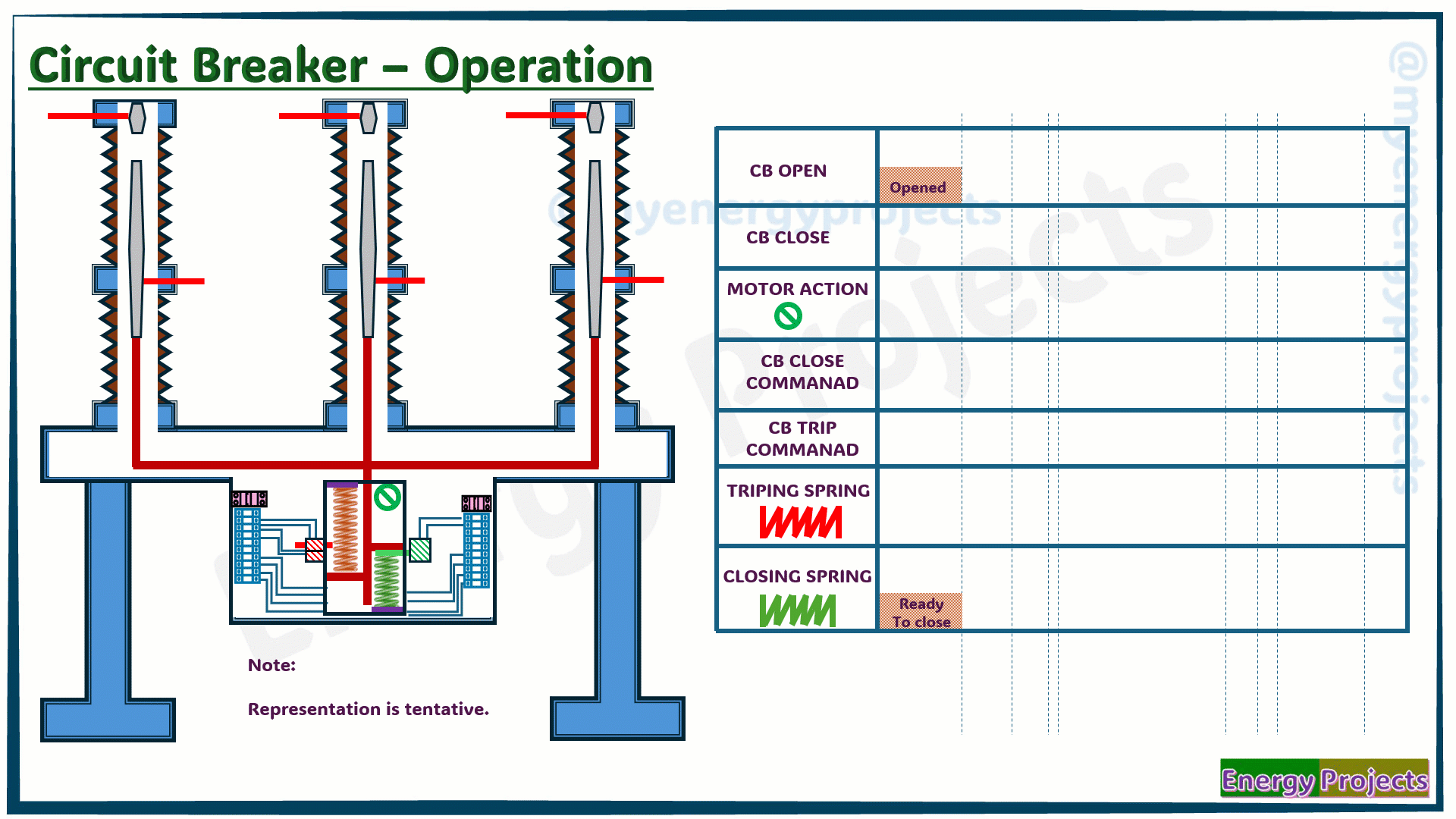11.Circuit Breaker – Operation
Closing Spring
The closing spring stores energy that is used to shut the breaker contacts. It is typically charged using a motor and held ready until a close command is issued. After operation, it recharges automatically to stay prepared for the next cycle.
Tripping Spring
This spring is responsible for quickly opening the breaker during fault conditions. It remains under tension and is released when the trip mechanism is activated. Its rapid action ensures safe interruption of current flow.
Motor (Spring Charging Motor)
The motor powers a mechanical system to compress and charge the closing spring. It operates either automatically after a closing action or when remotely triggered. This ensures the breaker is always ready for the next operation.
Trip / Close Coils
These coils are electromagnetic actuators that control breaker movement. The trip coil releases the mechanism to open the breaker, while the close coil activates the closing function. Both are essential for reliable remote or automatic breaker control.
Operation
The operation of a spring-charged circuit breaker follows a defined cycle, as illustrated in the operation diagram.
Initially, the circuit breaker is in the open position, and the closing spring is fully charged and ready for operation. Upon issuing a close command, the circuit breaker mechanism responds, the open indicator signal drops, and the close signal rises, indicating movement to the closed state.
As the breaker closes, the energy stored in the closing spring is released, closing the main contacts. Simultaneously, the tripping spring is also charged, preparing the breaker for the next trip. At the same time, the motor is automatically activated to recharge the closing spring, ensuring readiness for subsequent operations. The motor continues to run until the closing spring is fully charged, which is indicated by the motor stopping.
How does Circuit Breaker Operates with the spring & Motor
The Circuit Breaker equipeed with below major componests
Closing spring
Tripping spring
Motor
Trip / Close Coils
During the subsequent trip operation, the trip coil is activated, generating a high trip pulse that triggers the breaker to open. At this moment, the tripping spring releases its stored energy, allowing the breaker mechanism to open the contacts. Meanwhile, because the closing spring was already recharged by the motor during the previous closing operation, the breaker is immediately ready for the next closing command, whether it is issued manually or through an automatic recloser system. However, if the motor has not yet completed charging the closing spring, the breaker will not be able to close. In such cases, an auto-reclose attempt may fail, potentially compromising system protection and continuity.
This automated cycle of charging and discharging ensures efficient and reliable circuit breaker performance, especially in protection systems requiring quick reclosings and fault clearing.
Conclusion
The tripping spring is charged by the closing spring, not by the motor. The closing spring, in turn, is charged either by the motor or manually using a crank.


